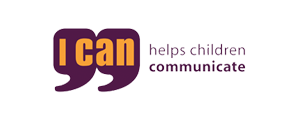Stammering
tammering, also known as stuttering, is a fluency disorder. It is characterised by the presence of an abnormally high amount of stoppages, causing dysfluent speech. These stoppages can be the result of repetitions, prolongations and blocking. Stammering can cause a breakdown in a child’s communication abilities. Children may avoid speaking in certain situations or may struggle to be understood in certain situations.
Our speech and language therapists can assess your child’s speech, language and communication skills as well as their thoughts on their communication to determine where the difficulties lie. Our speech and language therapists assist the process of natural recovery and prevent a long term problem by providing advice and therapy to make changes to your child’s speech.
Speech and language therapy can increase your child’s fluency and communication by creating a change in your child’s communicative environment to make them feel more relaxed and comfortable in using their speech.
What is stammering?
Fluent speech is described as speech that flows easily and smoothly in both sound and information. It requires smoothness between individual sounds, syllables, words and phrases. For fluent speech a person must pause in the correct places, use a normal intonation pattern and the choice of words, used to sequence ideas, must flow.
Between the ages of 18 months and 5 years children may show some patterns of normal dysfluency. Children may be hesitant in their speech as well as pausing using sounds like ‘err’ and ‘umm’. Children may also repeat words and phrases such as ‘mummy can I umm can err can I please have teddy’. Children who have typical dysfluency rarely have single sound repetitions, prolongations or blocks in their speech. Children also do not show any secondary behaviours as they are usually unaware of their dysfluency.
The onset of a developmental stammer normally occurs gradually alongside a period of rapid development in speech and language. A developmental stammer can vary in severity. A child who stammers appears tense and is usually aware of their difficulties. With a developmental stammer there are both primary and secondary features of stammering.

Primary features of stammering (overt behaviours)
Primary features are those related to the child’s speech that others can see and recognise as part of their stammer.
Repetitions
Repetitions of individual speech sounds, this is usually the first sound of a word e.g. p..p..p..p..pig
Repetitions of syllables (part of word repetitions) mu…mu..mu..mummy
Repetitions of whole words e.g. my…my…my house
Prolongations of sounds
A prolongation of a speech sound is holding onto a sound for longer than it is required to produce the sound e.g. ssssssstop
Blocking
When a child is blocking they stop either the air flow or their voice from coming out. Usually the articulators required to make sounds also freeze so no sound is made. This leaves the speech sound sounding tense or forced e.g. m----um.
The primary features of stammering can impact a child’s communication as their speech requires more time and patience from their conversational partners. Quite frequently people try to assume what the child is trying to say and take over the child’s sentence, predicting what they were about to say. This can cause frustration as the child can feel like they are not being heard. Children who stammer can become increasingly frustrated with themselves as their speech difficulties can make them hard to understand.
Our speech and language therapists reduce the level of difficulty by providing your child with strategies such as easy onset speech that help reduce certain features of a stammer. As well as providing advice to parents, siblings and professionals on how to allow the best communicative environment for children who stammer.
Secondary features of stammering (covert behaviours)
Secondary features are those that others can’t always see and are kept hidden. These behaviours are sometimes coping mechanisms used to help mask and manage the stammer.
Avoidance
If a child becomes aware of the sounds and words that trigger their stammer they can create coping strategies to help them avoid their stammer. They may do this by avoiding the words and using alternative words (substitution). Or they may choose to talk around the word (circumlocution).
Interjections
These are pauses and fillers in speech, done by using meaningless words and phrases such as urm, ahh, err, you know.
Feelings and attitudes
Most children who have a stammer have a negative attitude towards their speech, they often feel frustrated or have anxiety when it comes to speaking. Children may also feel embarrassed or ashamed.
Facial and body movements
Some children may show physical behaviours when stammering such as avoiding or breaking eye contact, eye blinking, tongue thrusting, jerking of the head, clenching of fists, stamping of feet, or even whole body movements. These movements may be used by the child to prevent stammering, to get a sound out or to come out of their stammering.
Secondary behaviours can help a child initially and give them a form of relief from their stammer however, they can become in built in the child and can be difficult to change.
Our speech and language therapists can aid a change in your child’s perception of their speech and increase fluent speech by providing techniques to help your child monitor their stammer.
Speech and language therapy assessments for stammering
Our speech and language therapists can assess your child’s speech and fluency skills to diagnose a stammer. This can be done by using a variety of assessment tools including information from parents and other professionals.
Our stammering assessment will include assessment of your child’s motor speech activity as well as their perspective of their stammer.
The result of the assessment process will establish:
- Identification of the onset of the stammer e.g. developmental or acquired.
- Identification of the different stoppages causing dysfluent speech.
- Identification of the impact of stammering on the child’s social and emotional well being.
- Identification of any speech and language difficulties.
- Acknowledgement and identification of the impact of the stammer on the child’s activity and participation in different activities in situations at home, school and different social environments.
Assessment process for stammering:
- Referral.
- Initial screening: appointment / telephone / questionnaire.
- Advice and monitoring.
- Full assessment:
- Case history.
- Parental interview.
- Child assessment - motor speech activity, speech abilities, receptive / expressive language abilities, social communication skills, attention control and the child’s perspectives on home, school and speech.
- Parent-child interaction video.
Speech and language therapy treatment for stammering
Speech and language therapy helps to increase fluent speech in children as well increase their potential for successful communication.
Suitable therapy for children who stammer includes:
- Stammering therapy
- Advice, training and strategies for parents, teachers, carers and other professionals.
- Lidcombe programme.
- Parent-child interaction.
Benefits of speech and language therapy
Speech and language therapy can be extremely beneficial for children who stammer. It can help children manage their stammer through the use of different techniques and exercises to increase fluent speech. Benefits of speech and language therapy for a stammer include:
- Increase in fluent speech.
- Increase in successful communication.
- Increase in self-esteem.
- Increase in activity and participation in daily activities.
- Increased social and emotional wellbeing.
Speech and language therapy can provide therapy to increase your child’s ability to speak fluently. Speech and language therapy can work on increasing your child’s ability to participate in activities that require them to use their speech. Therapy can be carried out directly through the speech and language therapist or parents as well as indirectly through changes in the child’s communicative environment. Our speech and language therapists work to provide a holistic outcome from therapy by providing the most effective approach to intervention.
Causational factors associated with stammering
The cause of stammering is unknown however it is agreed by professionals and researchers that there are many factors that contribute towards a child having a stammer.
Stammers can be developmental or acquired. A stammer can happen at any time and don’t have to be present from early childhood. Acquired stammers can be the result of an acquired brain injury or stroke.
Factors include:
- Genetics - Family history of stammering.
- Speech and language development - Speech and language difficulties or delay.
- Neurophysiology - Differences in the way the brain processes speech and language. Or trauma to the brain through stroke or acquired brain injury.
- Environmental influences - Communicative environment, social pressures, high expectations.
- Psychogenic - Result of stress or trauma.
- Gender - Boys are more likely to stammer then girls.
- Unknown cause
Summary
A stammer occurs when there are certain stoppages in speech. A stammer can occur at any time and can cause frustration and anxiety in children. Our speech and language therapists can provide a comprehensive assessment and individualised therapy programme to reduce the level of dysfluent speech and increase their communication skills.
What to do next
Our speech and language therapists will provide a complete assessment and ongoing therapy for stammering. If you think that your child has a stammer, or have been alerted to this from school then please email office@sltforkids.co.uk call 0330 088 2298.








